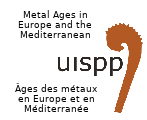A quarter of a century before he presented his much-cited chronological system for southern Germany (1924), Paul Reinecke (1872-1958) published a four-period system for the Hungarian Bronze Age based on the three-volume material edition "Althertümer der Bronzezeit in Ungarn" by József Hampel (1887, 1892, 1896), first in Hungarian in 1899 and then in German in 1901. As early as 1902, Reinecke corrected some of his dates – on the basis of a more secure typology – by publishing a compilation of the most important Bronze Age finds from the North German and South German zone, including Bohemia, Hungary and Switzerland, in the form of a tabular overview of the Bronze Age stages A-D, and supplemented this with a chronological grouping of Bronze Age finds from the eastern Mediterranean region.
This chronological system, presented in 1902 and later adapted by Reinecke several times (1905, 1909, 1924) to the constantly improving basis of archeological sources, is still in use in large parts of Europe as a reference for dating Bronze Age finds (also in the corpus "Prähistorische Bronzefunde"), even if its principles are hardly known any more.
The chronological and chorological order of the archaeological source material is the basis for all cultural-historical interpretations. The first step is the relative chronological classification of the finds, based on an analysis of the objects that is as far-reaching as possible in terms of form and typology and on the statistically significant evaluation of find associations in grave and depot finds as well as on the evaluation of stratigraphic features. The initial aim must be to achieve the finest possible sequence of supra-regional chronological horizons, with the help of which the different regional and local developments, which by no means always have to follow the same rhythm, can be selectively linked. Bronze types that have always been widespread throughout the region are particularly suitable for this purpose. The pottery also reveals common period-specific characteristics across different regional style groups. In this way, phenomena in settlement life or social practice can be reliably related to each other chronologically on a supra-regional level. Dating based solely on radiocarbon measurements is not suitable for such overarching comparisons.

 PDF version
PDF version
